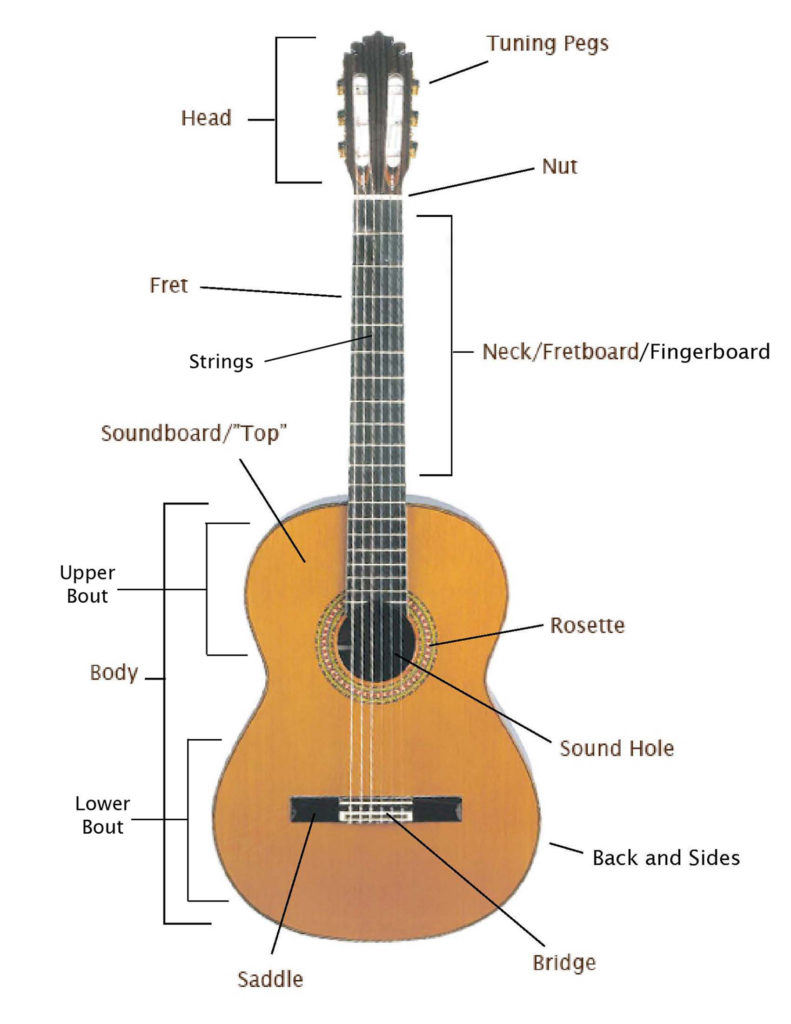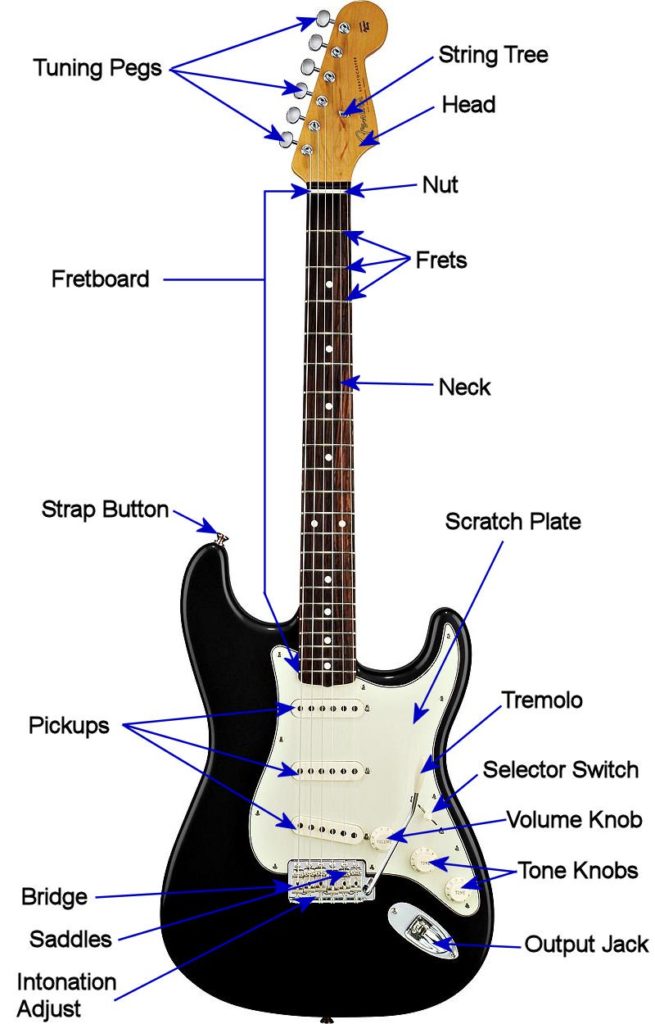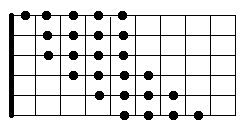No products in the cart.
Guitars
Christmas Shopping for a Guitar
If Christmas shopping for a guitar is an activity in your immediate future – the Holiday season will be here before you know it – than here are some helpful tips for your journey. If you plan to buy online, my advice is to not wait too long. You know that shipping closer to Christmas can become an issue. Personally, I’m a bit old-fashioned and I rather get the answers in a one-on-one conversation, than via an online commerce chat option or trying to catch the attention of a sales clerk in a huge mall store.
And here is where Jerry Lee is a master teacher. He knows for example whether certain brands have gained popularity through real quality or just marketing efforts. He can points out the advantages of certain tone woods over others, when it comes to the type of music you want to play, which strings to buy, what picks to use for rhythm and leads, and so much more. He’s a musician’s musician, who challenges you to ask the right questions FOR YOU and then helps you wade through the many choices and options.
Now, if you are like me, seasoned by several decades of playing, you probably have visited hundreds of guitar shops over the years, often overwhelmed by the psychologically challenging guitar options, hanging from endless walls and display stands. In the early years it was much easier to get a balanced education in instrument shopping. Most stores were relatively small, always family owned and stocked a variety of instruments, – guitars, a small selection of mandolins, banjos and ukeleles – one or two keyboard options and drum kits, accessories, music sheet books, a limited selection of amplifiers and speaker cabins and some microphones and audio equipment. A simpler time no doubt. Buying a guitar meant a full afternoon spent in the music store. It’s where I learned how to pick out a guitar, that I could appreciate for a good while, as it kept me company on my journey to become a guitarist.
Tips
Today, whenever I pick up a guitar in a shop, people must think I’m the rawest of beginners. But that’s ok – I’m not there to impress anyone, I’m there to thoroughly test out the instrument I may consider buying. For me such a test will always be fairly systematic, and not necessarily pretty sounding. You need to test/inspect as many aspects of the instrument as possible, so you don’t get any nasty surprises when you take it home. I do something like this:
1. Strum some simple chords, for example an open A. Just a single strum, then let it ring. Really, really listen to how that chord rings out. Does that sound speak to you? I do this acoustically even with electrics, because for me personally the basic acoustic tone is so very important. You’re looking at an acoustic, so of course this is also important to you. But also be aware that a string brand can also make a world of difference, especially on an acoustic guitar.
2. Tuning. Before even starting to decide if I like a guitar or not I’ll be checking out how it holds tuning. This is the number one deal breaker for me. If a guitar has tuning problems, it doesn’t matter how it otherwise sounds.
Tuning problems can have several causes and some are very very important to check especially on cheap guitars, because they are caused by some of the ways manufacturers cut costs – hoping that beginners won’t notice, because the cheap components often don’t look different from the more expensive ones. So here we go:
a) Machine heads/Tuning Pegs – do they hold? Tune up the guitar, do some wild bends (if your fingers are not strong enough, simply pull up the string rather forcefully). Check if the strings go flat. If they do, it can be because it’s new strings. But if you tune up, pull, tune up, pull, tune up, pull… and they are still flat…. then perhaps the machine heads will cause you problems.
b) The nut – now this is a quite tricky one, and many beginners will have a hard time spotting it. Is the nut cut correctly? The usual (and common) problem can be this: tune up the open strings so they are perfectly in tune. Now play an open E chord. Check each of the fretted notes against the tuner (B,E,G#) – are they in tune? They should right? But they aren’t always, if the nut is cut incorrectly. If they are not, try tuning up the string so the open E plays correctly. Now fret an open D and check those fretted notes (A,D,F#) – are they now in tune? You’ll find that with a poorly cut nut, it might not be possibly to reach a tuning where both of those open chords play perfectly in tune! All open chords should of course ring out perfectly in tune.
c) Do the strings stick in the nut slots (if they do, this can at least be fixed somewhat easily)
d) Check intonation (can also be adjusted, so not a deal breaker if it’s a bit off…) To check intonation you will need an electronic tuner. Tune your instrument to pitch and fret each string naturally at the 12th fret. If notes played at the 12th fret are dramatically sharp or flat, the intonation may require correction.
3) Check the fretboard. Check if there are any fretted notes that causes a buzz. If there are, again it might be possible to fix this with a proper setup. But… it could also be an indication of poor/uneven fretwork overall.
4) Sharp spots at the edges of fretboard? When you glide your hands all the way up and down, feeling both the top and bottom side of the neck – do you feel the frets sticking out? If you do, move on to the next one.
5) Sharp frets on top of the fretboard? Very hard to test in a shop, but if the fretwork is too cheap the frets might not be rounded enough and have sharp/rough spots. This will cause strings to break if you bend near a sharp fret. A very annoying problem to deal with.

 • After you have checked all these points it is now time to just play the guitar for a while and see if you actually enjoy playing it. If you want to add a bit more …play songs with barre chords for a while. Always a good test to see if the neck shape is a good fit for your hand.
• After you have checked all these points it is now time to just play the guitar for a while and see if you actually enjoy playing it. If you want to add a bit more …play songs with barre chords for a while. Always a good test to see if the neck shape is a good fit for your hand.

• If you’re buying electric there is another set of rules to test for. I usually don’t play any song. What I do is play chromatic scales all up and down the neck to check for fret buzz, which could be a sign of poor setup or uneven fretwork.
• If your eyeing an electric guitar, then just listen to basic chords while playing with the knobs and switches to make sure the electronics are ok. Depending on the price range you shop for, it may be wise to give some allowance when it comes to woods/pickups/finishing.
I will however not accept poor fretwork, warped woods/neck, loose hardware or noisy/faulty electronics.
For that, I never need a “song list” to play. Just basic chords and the chromatic scale and some string bending.
Last but not least you also need to factor in adaptability – that is…..your adaptability. Over the years I noticed for example that guitars with a belly (Ovations in particular) started competing with my own ever widening girth and sitting down to play became over time a struggle to keep the guitar properly angled. Standing up and playing with a strap even became a nuissance, so I had to say goodbye to my 12 string. Continuity as mentioned in above posts is important, but your adaptability is also quite critical, even if difficult to define. Does it feel good, is it too heavy, off-balance and I suppose the biggest two: do you feel you can play it right and does it make sweet sounds?
It would be your best bet to go to Jerry Lee’s Music Store if Christmas shopping for a guitar is part of your shopping list this year. Nothing beats the help of an expert to point you in the right direction for your musical journey and your budget.

